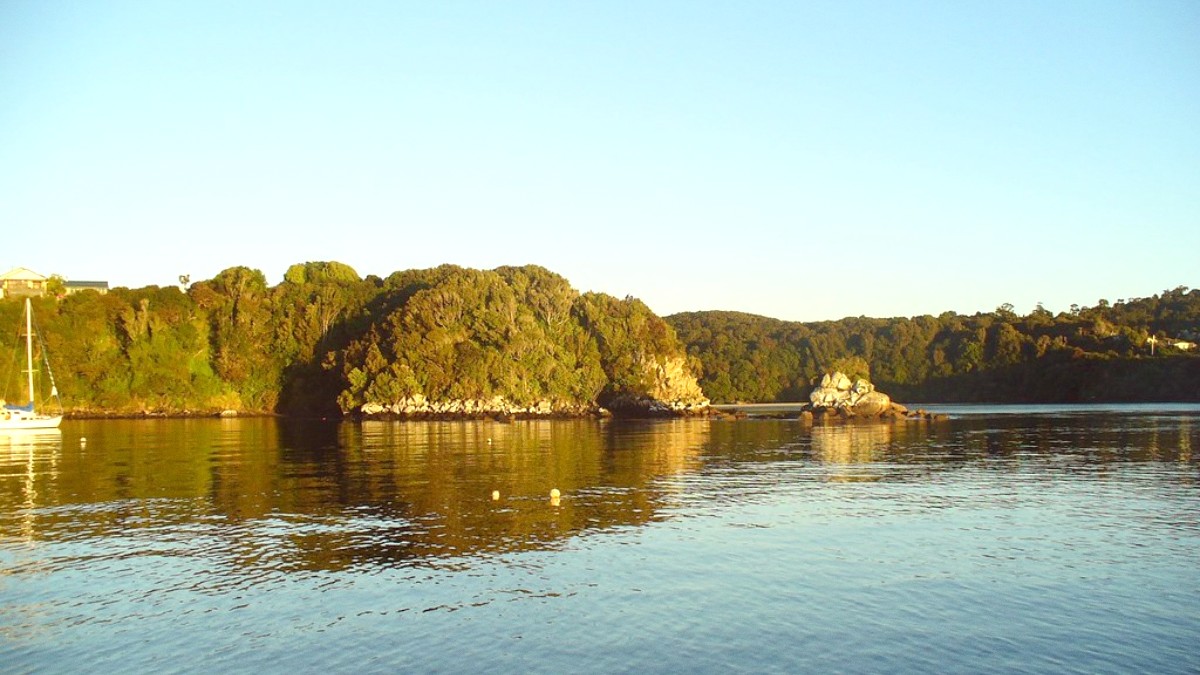
New Zealand
For a concise visit, focus on highlights. Arrive by morning ferry or flight. Check into your accommodation. Explore Oban: Visit the Stewart Island Visitor Centre, the local museum, and take short walks to Observation Rock or Bathing Beach for initial views. Evening: Join a kiwi spotting tour for a chance to see the Southern Brown Kiwi (Rakiura Tokoeka) in the wild. Next morning: Enjoy breakfast at a local cafe before departing.
For longer stays, consider a Weekend Getaway (2-3 Days) or a One-Week Comprehensive Experience (7 Days), or even a Two-Week In-Depth Exploration for serious hikers and nature enthusiasts. These deeper dives allow more remote hiking, wildlife viewing, and multiple visits to key locations. Find and book experiences with GetYourGuide.
Customize your Stewart Island adventure to your specific passions.
Explore the Oban settlement, visit the Stewart Island Museum, and see St Andrew's Church. Consider exploring Port William (via water taxi or a section of the Rakiura Track), a historically significant Māori settlement and whaling station.
Focus on dining at The South Sea Hotel and Kai Kart for fresh blue cod and local seafood. Experiment with self-catering meals using groceries from the Four Square supermarket to taste local ingredients.
Prioritize the Rakiura Track or, for experienced hikers, sections of the North West Circuit. Consider kayaking in Paterson Inlet, fishing charters, and potentially a scenic flight over the island for aerial views. Bookable experience components are available via GetYourGuide.
Focus on short, easy walks around Oban. Making Ulva Island birdwatching a priority, potentially with a guided tour, is a good idea. A kiwi spotting tour provides a magical experience if children stay quiet and awake.
Stewart Island also caters to specific interests beyond typical tourism.
This emphasis is limited on Stewart Island. Browsing local craft shops in Oban for unique, locally made artworks and souvenirs serves this interest.
Embrace Rakiura National Park's tranquility. Engage in meditative walks, enjoy the dark night skies for stargazing, and appreciate the quiet pace of island life for disconnection and rejuvenation.
Visit the DOC Visitor Centre for ranger talks, learn about conservation projects, and engage with locals to discover island stories and perspectives.
Stewart Island travel adapts to various budgets with smart planning.
Stay in hostel dorms or at the camping ground. Prioritize self-catering for meals from the Four Square supermarket. Focus on free short walks (Observation Rock, Horseshoe Bay) and undertake the Rakiura Track, using DOC huts for accommodation. Choose the ferry for island travel.
Opt for motels or guesthouses for accommodation. Enjoy a mix of self-catering and casual restaurant meals. Travel by ferry. Include a kiwi tour and an Ulva Island tour in your plans. These tours offer memorable experiences.
Book a boutique lodge for accommodation. Indulge in fine dining (where available). Consider a scenic flight to the island for a premium arrival experience. Arrange private guided tours for kiwi spotting, Ulva Island, and boat charters for personalized experiences.
Prioritize the Rakiura Track as a core activity. It is an immersive experience and offers good value for its cost, combining hiking and accommodation in DOC huts.
Advance booking for transport and accommodation often yields better rates. Off-peak season travel can present lower prices. Look for package deals if offered by tour operators or ferry services.
Many of Stewart Island's natural attractions are free to experience. Walking trails, birdwatching, and enjoying the scenic beauty cost nothing. Local beaches are accessible without a fee.
Different seasons present distinct experiences on Stewart Island.
This period offers the best hiking weather, with long daylight hours. It is prime time for all tours, with maximum availability and options. Warmer temperatures make water activities more pleasant.
Winter presents the best opportunity for Aurora Australis viewing due to clear, long, dark nights. You will discover very few crowds and potential for lower accommodation prices. Prepare for cold and wet weather conditions.
No major festivals occur on Stewart Island itself. The island's appeal lies in its natural environment and quiet community life, rather than large-scale events.
Embrace the solitude and the island's rugged weather during the off-season. Focus on indoor activities like visiting the museum or taking short clear-weather walks. This period offers quiet contemplation and appreciation for the raw beauty of the island without crowds.
Best in summer and shoulder seasons. Winter trails can be muddy and wet, calling for appropriate gear.
Kiwi spotting tours run year-round; marine life sightings vary by season. Winter nights are good for owls.
Summer offers long daylight; winter presents dramatic skies and potential for the Southern Lights.
Strategic planning enhances your journey to Stewart Island.
Booking your stay and any desired tours well in advance, notably for peak summer months, is advisable. Options are fewer than on the mainland, and popular choices fill up quickly.
Consider how you will reach Stewart Island (ferry or flight from Invercargill/Bluff). Book these connections in advance, especially during busy periods. Once on the island, walking is the main way to get around Oban, with some shuttle services available.
Pack for variable weather conditions, regardless of the season. Layers, waterproof outer shell, and sturdy footwear are important. Bring insect repellent, especially for sandflies. Pack out all rubbish.
The island has a small medical center, but serious emergencies require mainland transfer. Carry any necessary personal medications. Inform someone of your hiking plans, especially for remote areas, and consider a personal locator beacon for extended treks.
For emergencies on Stewart Island or anywhere in New Zealand, dial 111. This connects you to Police, Fire, and Ambulance services. It is a free call from any phone. Keep local Department of Conservation (DOC) contact details handy.
Weather on Stewart Island can change rapidly. Check forecasts and track conditions daily at the DOC Visitor Centre before venturing out, especially for longer walks.
Strict biosecurity measures protect the island's predator-free status. Clean your gear thoroughly before arriving to prevent introducing pests. This protects native wildlife.